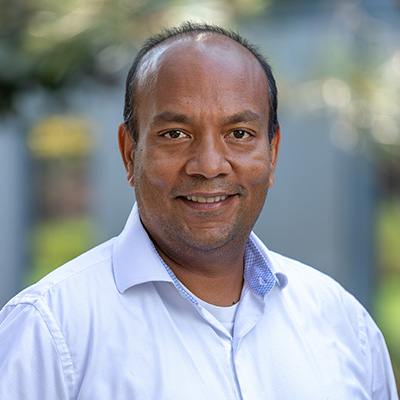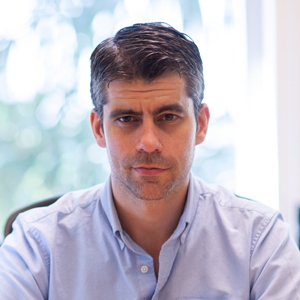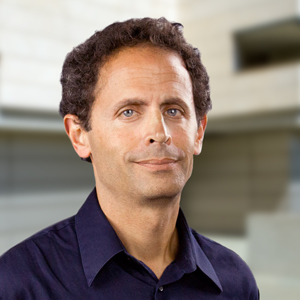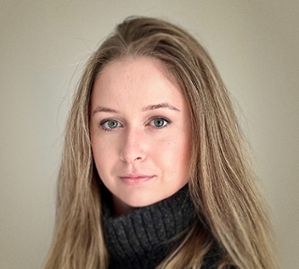Scripps Research Collaborative Innovation Fund

It takes a team to bring an idea to life.
The Scripps Research Collaborative Innovation Fund (CIF) is a critical fund designed to empower collaborative teams in their quest to advance high-risk, high-reward science into real-world application. By bringing together scientists, the CIF helps surface truly innovative ideas that have the potential to improve global health.
The first winning team is Professor Phil Baran, PhD, and Assistant Professor Yuzhong Liu, PhD, and their project, “Biosynthesis and evolution of new-to-nature peptide antibiotics.” Their research strives to develop next-generation antibiotics to fight superbugs, leveraging non-ribosomal peptide synthetases (NRPSs) to generate and screen libraries of new antibiotics that can target drug-resistant bacteria like tuberculosis and methicillin-resistant Staphylococcus aureus (MRSA).

Phil Baran, PhD

Yuzhong Liu, PhD
The second winning team includes Professors Sumit Chanda, PhD; John Teijaro, PhD; Christopher Parker, PhD; and Benjamin Cravatt, PhD. Their grant-winning endeavor, “Therapeutic discovery through programmable protein heterodimerization,” aims to develop technology that rewires how proteins interact inside our cells. By pairing proteins in unique ways, the team aspires to find hidden biological processes that could lead to therapies for various conditions, like cancer, autoimmune diseases and viral infections.

Sumit Chanda, PhD

John Teijaro, PhD

Christopher Parker, PhD

Benjamin Cravatt, PhD
The third winning team is Scripps Research Fellow Shannon Miller, PhD and Professor Howard Hang, PhD. Their project, “A CRISPR-free precision genome editing system for large DNA manipulations,” intends to enable DNA editing in human cells without relying on CRISPR technology, which can sometimes cause harmful side effects. By avoiding the breaks in DNA that CRISPR requires, their method could offer a safer, more precise way to develop therapies for genetic disorders like Crohn’s disease.

Shannon Miller, PhD

Howard Hang, PhD
The Scripps Research Collaborative Innovation Fund has been established to address the challenge that truly innovative, high-risk, high-reward science faces in securing financial support at its inception. Based on understanding that: 1) such projects are best recognized by world-class innovators, 2) opportunity is amplified by seed funding provided to these worthy projects, and 3) correctly applied, funding can catalyze valuable productive research at the underfunded interfaces of scientific disciplines, the Collaborative Innovation Fund is designed to catalyze the next wave of innovation at Scripps Research, drawing on the momentum of its current environment and talent.
The Collaborative Innovation Fund recognizes that high-risk, high-reward basic research projects may lie at the intersection of disciplines and involve partnership of two or more research laboratories on the Scripps Research campus. The Fund anticipates it will provide the requisite seed funding to launch such projects from initial concept (i.e., preliminary data are not expected) to sufficient maturation for successful competition for more traditional sources of funding.
The Collaborative Innovation Fund operates under the supervision of a Senior Advisory Board (SAB), which will prioritize basic research projects that have high potential to substantially advance technological innovation, advance new applications for emerging technology, transform applicability of existing technology, and combine complementary methods at the interfaces of different disciplines to address fundamental problems with potential for high scientific impact.
Research funding will be deployed through internal grant competition cycles. Each grant cycle will distribute 2-3 grants of $450,000-750,000 each over a duration of three years (inclusive of indirect costs).
Senior Advisory Board
- Tom Daniel (founder)
- Ben Cravatt
- Edward Roberts
- Peter Schultz
- Lisa Stowers
- Ian Wilson
- Travis Young
- Jin-Quan Yu
Each individual or team application must be led by tenured or tenure-track faculty at Scripps Research.
Applicants are required to submit a Letter of Intent (following a provided template), which will be reviewed by the Collaborative Innovation Fund SAB. Proposals must be exceptionally innovative in nature. Due to the focus on novelty and innovation, preliminary data are not required.
Following review, the SAB will select finalists and invite full proposals from selected candidates. Awarded teams will be expected to give annual presentations on research progress and submit a final report at the end of the grant term.
Questions about the Fund or application process can be directed to Kristen Williams (Senior Executive Coordinator).
Letter of Intent Template:
Complete the provided template, which includes:
- Letter of Intent Guidelines (PDF)
- Letter of Intent Template (PDF)
- PI Information
- Project Description
- Innovation Statement
Project Proposal Template:
If invited to present a full proposal, a template will be provided, which includes:
- Background and Rationale
- Project Objective and Impact
- Study Plan
- Budget Narrative
Budget Template:
If invited to present a full proposal, a template will be provided for the anticipated grant expenditures and justification.
Grant funding can be used to support the following project elements:
- Training and training-related expenses (preferred)
- Capital expenditures (preferred)
- Research
- PI effort (PIs much include some effort)
Grant funding cannot be used to support:
- Subcontracts
- Outside collaborators

